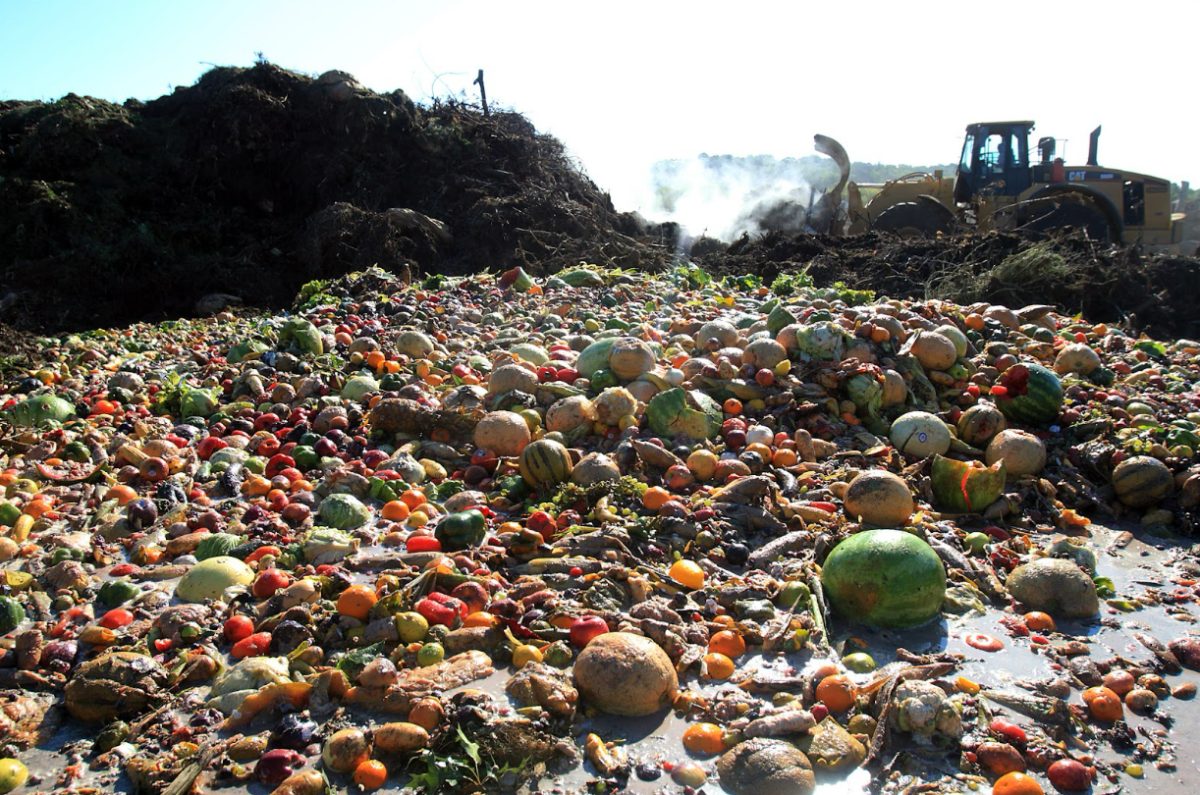In our county and school, we are fortunate enough to have abundant food and water sources. Many people have access to plentiful food and water, making it seem like these resources are endless. Often, we forget where all of this food and water comes from and the long, energy-consuming processes that it takes to get to us. If we can just get food or water anytime, who cares if every now and then we dump some down the drain? We can always just go to the sink and get more water or go to the grocery store and get more food…right?
The disconnect that develops between people and the food and water they consume leads to acts of careless wasting of these everyday commodities. As a society, we have an issue with waste.
Globally, a third of food intended for human consumption is wasted or lost per year. This adds up to 1.3 billion tons of food, enough to feed 3 billion people. While estimates differ by source, about 9 million people die from hunger every year. Take a second and compare those two figures. We’re wasting food that could feed the millions of people who die from starvation. If that itself doesn’t convince you to think twice before throwing “bad” or leftover food away, then allow me to further persuade you with the environmental impacts of food waste. This isn’t just a humanitarian issue, but it is also a critical environmental issue that is having large impacts on our world.
Food waste happens at all stages of production and consumption. It occurs at harvesting and processing levels and at retail and consumer levels. As much as we as consumers are at fault for a good amount of waste, the food industries need to be held responsible as well. In developed countries, like the U.S., 40% of food waste occurs at the retail and consumer levels, while in underdeveloped countries, 40% of food waste occurs at post-harvest and processing levels.
Food is wasted for many reasons, both unintentional and intentional. Food loss can happen at the early stages of the production process and can occur for reasons like inefficiency of harvesting or processing. These are simply unintentional flaws in the systems, but they need to be addressed. Food retail industries like grocery stores and restaurants must institute policies against food waste. These could include improving product development, marketing and storage methods. Additionally, by donating excess food instead of throwing it away and ensuring that older products get consumed rather than unnecessarily wasted.
More startling, in our country, food is wasted more often at retail and consumer levels. Some statistics show that in the U.S. over 50% of all produce that gets thrown away is done so because it is “too ugly” and “unfit to sell”. Because of reasons like this, large industries waste food on extensive levels that are often hidden from the public eye. Additionally, people who have easy access to food don’t think twice about throwing away food they don’t want.
When food gets wasted, it typically ends up in landfills. In these environments, food can’t properly decompose, so it releases greenhouse gases. A third of all greenhouse gas emissions that come from humans are from food waste. The most significant of these gases is the greenhouse gas methane, which is five times stronger than carbon dioxide and greatly contributes to the greenhouse effect.
Additionally when we waste food, all of the natural resources, time and energy that goes into its production is wasted as well. The later the food is wasted in the process leading to consumption, the greater its environmental impact is. As food is transported globally, oil, diesel and other fossil fuels are used to power transportation methods. Consumption of these fossil fuels are pointless if the food they powered the transportation of simply gets thrown away. This is similar to the water used to grow and process the food we waste.
“By wasting food, we are wasting fresh water. Given that countries have a severe water shortage, with countries being predicted to be uninhabitable in a few decades, conserving freshwater should be a global mission,” Jangira Lewis said in her article, “How Does Food Waste Affect the Environment”.
Additionally, the National Resources Defense Council (NRDC) found that food waste contributes to the wastage of one-fourth of our water supply. To attempt to put this in perspective, think about this: for every kilogram of beef that is thrown away, it is equal to 50,000 liters of water being thrown away and for every glass of milk dumped down the drain, nearly 1,000 liters of water is wasted.
Wasting food isn’t the only cause of water waste though. We waste water in our when we brush our teeth, flush toilets and shower. On average, an American family uses more than 300 gallons of water per day. As population and demand for water increases, our supply will remain constant and begin dwindling if we begin to use water at such extensive levels.Yes, it may seem like with our vast oceans and river systems in this world water sources are endless, but really, less than 1% of Earth’s water is available for human use. Overusing water puts pressure on our water supplies and the ecosystems that rely on them. Additionally, lower water levels can contribute to higher concentrations of pollutants, both natural and human ones.
Climate change will increase stress on our resources, but it also works the other way around. If we continue to waste and overconsume, we will contribute to climate change and other environmental impacts. It can become a never ending cycle if we don’t take action. We need to start being more conscious about our resources. Unnecessary waste cannot become an incorrigible habit of society. I implore you to be conscious of the amount of food you are throwing away after school lunch or the amount of time you are standing in the shower, letting the water run. The status quo is not sustainable and we need to start making changes in our lifestyles.









